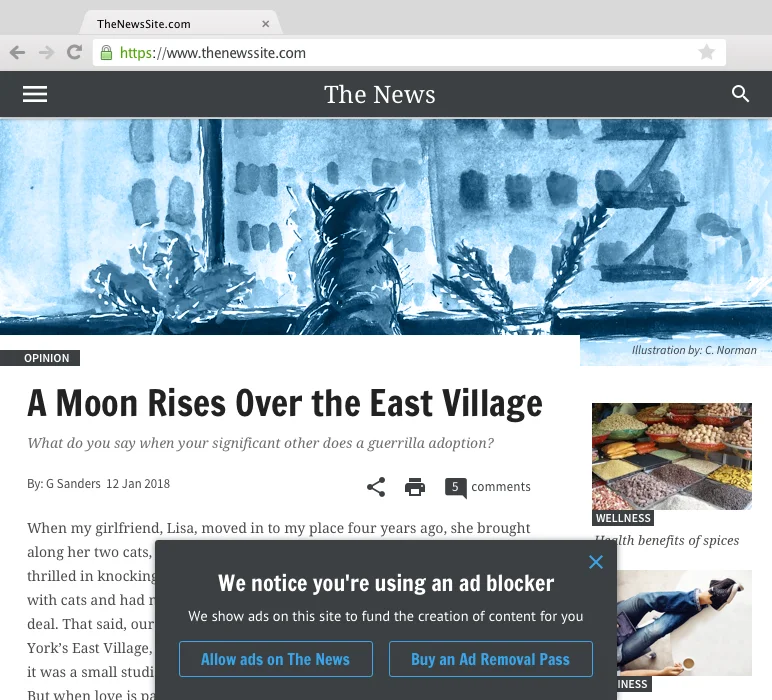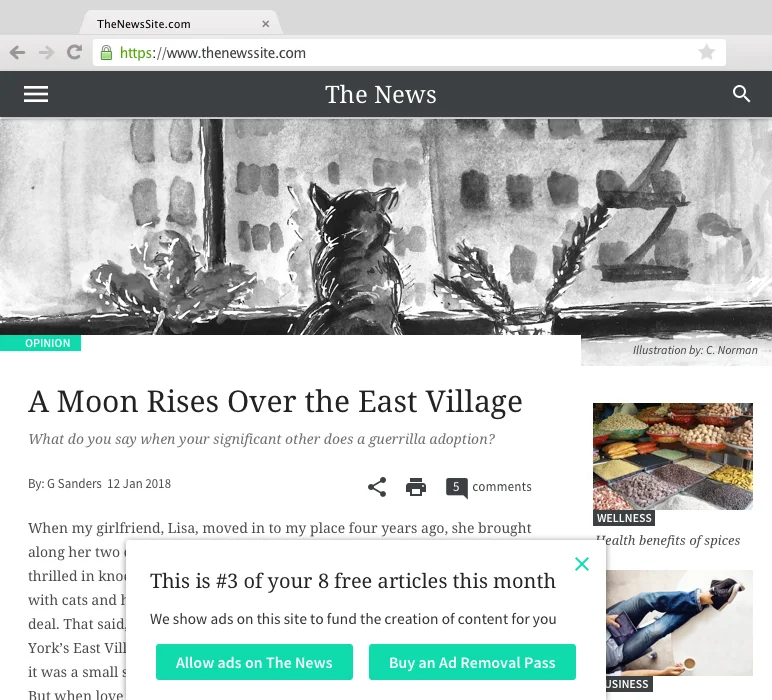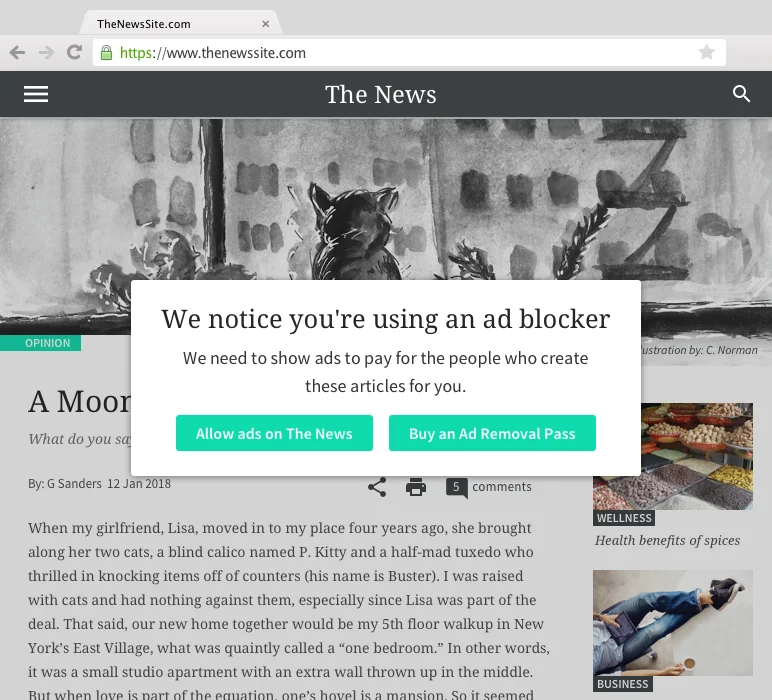Helping Publishers Recover Lost Revenue From Ad Blocking
Today, the majority of the internet is supported by digital advertising. But bad ad experiences—the ones that blare music unexpectedly, or force you to wait 10 seconds before you get to the page—are hurting publishers who make the content, apps and services we use everyday. When people encounter annoying ads, and then decide to block all ads, it cuts off revenue for the sites you actually find useful. Many of these people don’t intend to defund the sites they love when they install an ad blocker, but when they do, they block all ads on every site they visit.
Last year we announced Funding Choices to help publishers with good ad experiences recover lost revenue due to ad blocking. While Funding Choices is still in beta, millions of ad blocking users every month are now choosing to see ads on publisher websites, or “whitelisting” that site, after seeing a Funding Choices message. In fact, in the last month over 4.5 million visitors who were asked to allow ads said yes, creating over 90 million additional paying page views for those sites.
Over the coming weeks, we’re expanding Funding Choices to 31 additional countries, giving publishers the ability to ask visitors from those countries to choose between allowing ads on a site, or purchasing an ad removal pass through Google Contributor. Also, we’ve started a test that allows publishers to use their own proprietary subscription services within Funding Choices.
How Funding Choices works
Funding Choice gives publishers a way to have a conversation with their site visitors through custom messages they can use to express how ad blocking impacts their business and content. When a visitor arrives at a site using an ad blocker, Funding Choices allows the site to display one of three message types to that user:
A dismissible message that doesn’t restrict access to content:

A dismissible message that counts and limits the number of page views that person is allowed per month, as determined by the site owner, before the content is blocked.

Or, a message that blocks access to content until the visitor chooses to allow ads on the site, or to pay to access the content with either the site’s proprietary subscription service or a pass that removes all ads on that site through Google Contributor.

On average, publishers using Funding Choices are seeing 16 percent of visitors allow ads on their sites with some seeing rates as high as 37 percent.
Ad blockers designed to remove all ads from all sites are making it difficult for publishers with good ad experiences to maintain sustainable businesses. Our goal for Funding Choices is to help publishers get paid for their work by reducing the impact of ad blocking on them, and we look forward to continuing to expand the product availability.
Source: Official Google Webmasters Blog



 201 W. Montecito St.
Santa Barbara, CA 93101
201 W. Montecito St.
Santa Barbara, CA 93101
Well this looks like another way to drive revenue. I always believed customers should have the option at blocking ads if they want to, because I know sometimes I dont like them. But being in the realm of marketing, you realize how much a company survives off programs like these, so any help that they can get always is beneficial to the lost money they might have had.
Yolanda, you raise a valid point about the importance of balancing user preferences with the revenue needs of publishers. Ad blocking can impact the revenue stream for companies, but providing alternative solutions, like the one mentioned in the blog post, can help publishers recover some of that lost revenue. It’s all about finding a middle ground where users have control over their ad experience while still supporting the sustainability of online businesses. It’s great to see efforts being made to address this challenge and find mutually beneficial solutions.